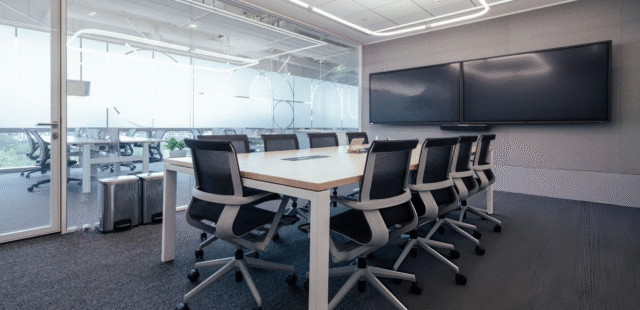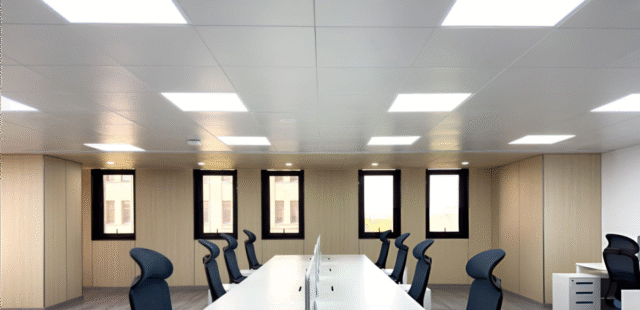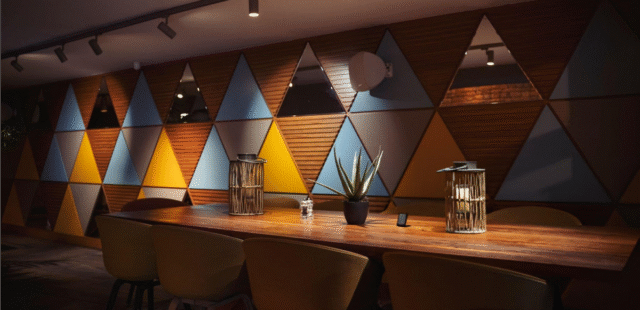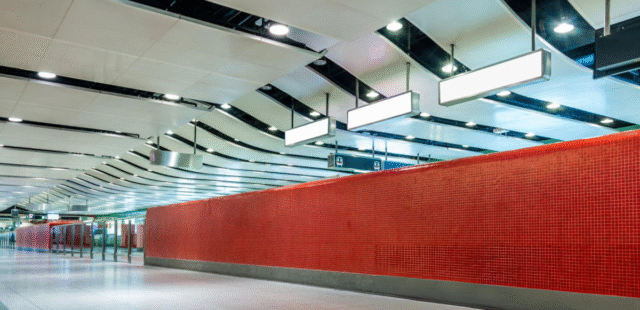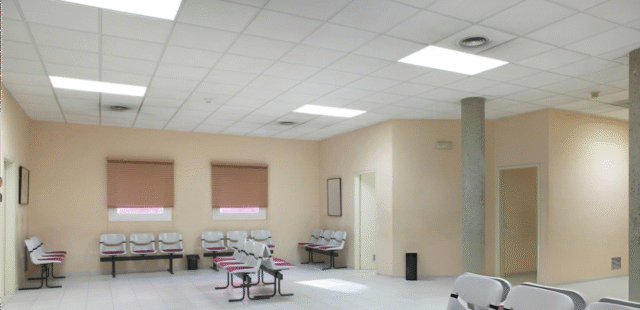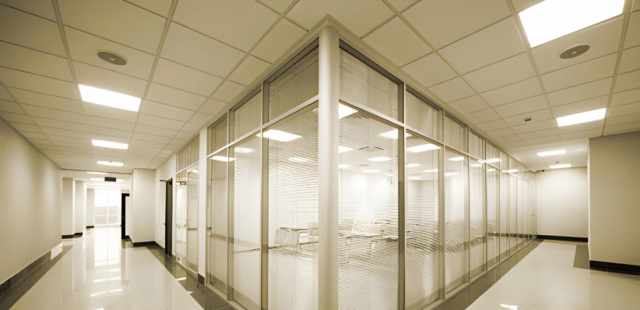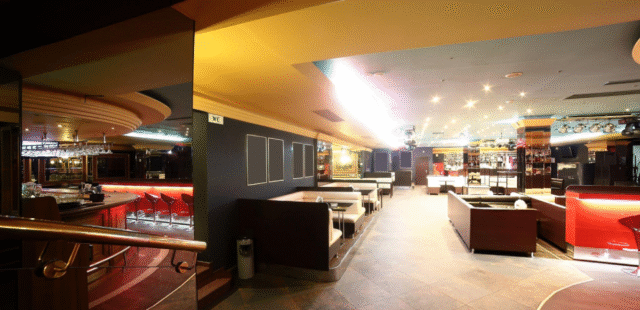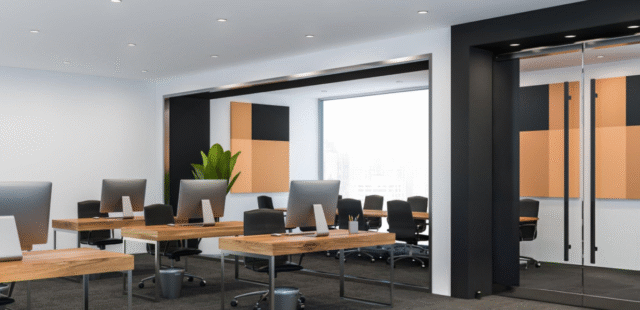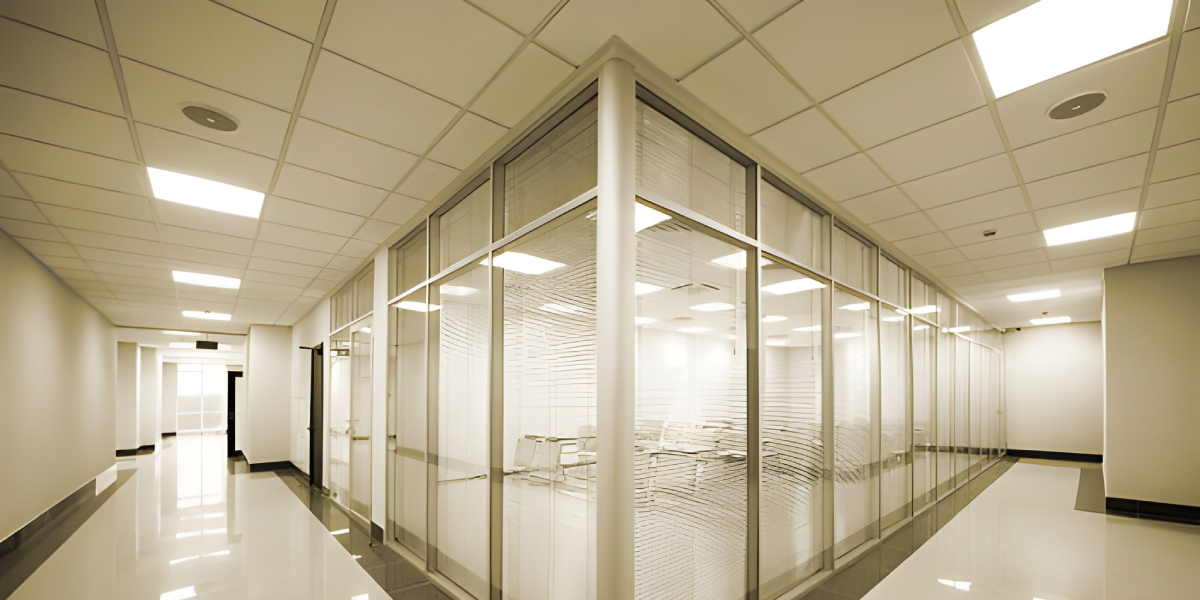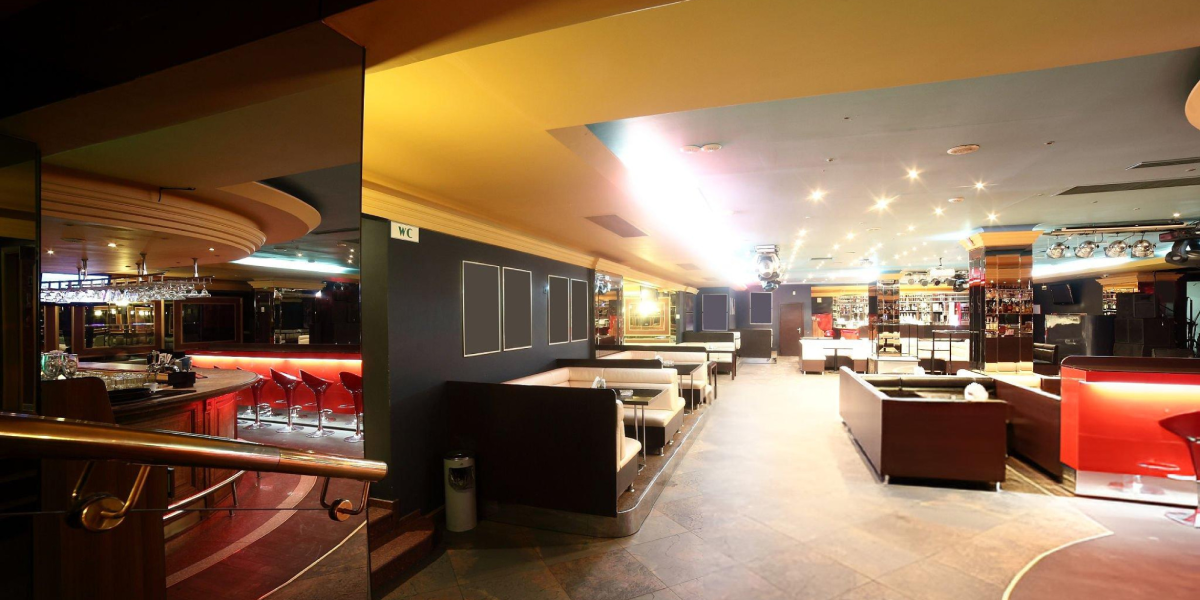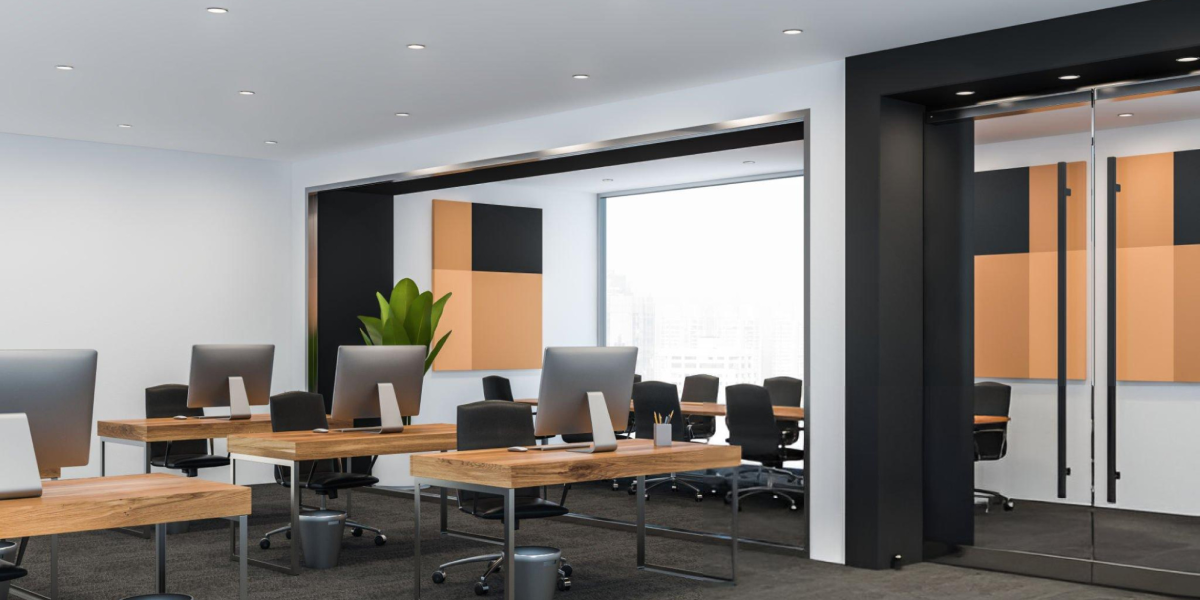
High-traffic environments, such as bustling offices, dynamic schools, critical care hospitals, and grand theatres, all share a common, invisible challenge: acoustics. The constant movement, conversations, and environmental sounds create a cacophony that can hinder productivity, disrupt learning, impede healing, and ruin a performance. Managing this auditory chaos requires a solution that is not only effective at absorbing sound but also robust enough to withstand the rigours of daily use. For any architect, designer, or facility manager, the goal is to find a soundscaping material that offers both exceptional acoustic performance and long-lasting durability.
This is where Fibre Glass Wool Acoustic Panels from Amazone By Furnitech emerge as the intelligent choice. These panels are specifically engineered to thrive in demanding settings, providing superior sound control without sacrificing resilience. They represent a sophisticated fusion of acoustic science and material strength, ensuring that your space remains quiet, safe, and aesthetically pleasing for years to come. In an era where the quality of our auditory environment directly impacts well-being and efficiency, investing in a proven, high-performance solution is not just a preference; it’s a necessity.
Before we delve into the extensive benefits of these panels, it’s important to understand what they are and how they work. Knowledge of their composition and acoustic properties is key to appreciating why they are the superior choice for managing noise in challenging environments.
At Amazone By Furnitech, our Fibre Glass Wool Acoustic Panels are crafted from fine, resilient glass wool fibres. The manufacturing process involves melting sand and recycled glass and spinning them into flexible, fibrous strands. These strands are then bonded together with a resin to form a dense, porous board. This composition results in a panel that is surprisingly lightweight yet incredibly strong and effective at trapping sound waves.
The applications for these panels are vast, making them a staple in commercial and public infrastructure. You will find them in open-plan offices, university lecture halls, Theatres, Railway Waiting Rooms, Voiceover Rooms, Dubbing Studios, Retail Spaces, hospital corridors, hotel lobbies, and performing arts centres. Their versatility allows them to be installed as Acoustic Ceiling Tiles, Acoustic Wall Panels, or even suspended as Acoustic Ceiling Clouds. For example, our Fabric Wrapped Acoustic Panels, which use a fibre glass wool core, offer exceptional performance and can be customised to fit the unique design of any space.
The true genius of Fibre Glass Wool Acoustic Panels lies in its inherent acoustic properties. The porous nature of the intertwined fibres is the key to its sound absorption mechanism. When sound waves encounter the panel, they enter the fibrous labyrinth. As the sound energy navigates through the complex network of fibres, friction is created, converting the acoustic energy into a minute amount of heat. This process effectively stops the sound from reflecting back into the room, thereby reducing echo and reverberation.
The performance of an Acoustic Panel is measured using specific metrics, primarily the Noise Reduction Coefficient (NRC) and Sound Absorption Average (SAA). Both ratings range from 0 to 1, with a higher number indicating better sound absorption. A material with an NRC of 0.85, for instance, absorbs 85% of the sound it encounters. At Amazone By Furnitech, we offer a range of Fibre Glass Wool Acoustic Panels with an exceptional NRC rating of up to 0.90. Our Fabric Wrapped Acoustic Panels can achieve an NRC of up to 0.95, providing best-in-class sound absorption, while our Acoustic Ceiling Tiles also boast impressive NRC values up to 0.70, ensuring a significant reduction in ambient noise.
Resistance to Daily Wear and Tear
High-traffic areas are subjected to a barrage of physical stressors. Foot traffic generates vibrations, equipment is moved, and walls or ceilings can be inadvertently bumped. Furthermore, regular cleaning and ambient environmental factors like humidity can take a toll on lesser materials. Our Fibre Glass Wool Acoustic Panels are engineered for this reality. The inherent strength of the glass fibres provides a robust structure that resists impact and damage. Furthermore, our panels feature excellent moisture and sag resistance, ensuring they maintain their form and structural integrity over their long life, even in challenging conditions.
When compared to other acoustic materials, the durability of Fibre Glass Wool Acoustic Panels is a clear advantage. While materials like acoustic foam can be effective at sound absorption, they are often fragile and susceptible to crumbling or tearing over time. Other materials may not offer the same level of moisture resistance, leading to warping or staining. Amazone By Furnitech’s panels, however, are built to last, combining their acoustic prowess with a durable finish that stands the test of time.
Fire Resistance and Safety Standards
In any public or commercial space, fire safety is a non-negotiable priority. Building codes and safety regulations mandate the use of materials that inhibit the spread of flames and produce minimal smoke. Fibre Glass Wool Acoustic Panels are naturally fire-retardant. Its core component, glass, will not support combustion. Our panels are rigorously tested to meet stringent fire safety standards, providing peace of mind and ensuring compliance with building regulations. This fire-resistant property makes them an essential safety feature in schools, hospitals, theatres, and crowded office buildings, where occupant safety is the highest concern. Choosing Amazone By Furnitech’s fire-resistant panels is a responsible decision that protects both people and property.
Resilience and Durability in High-Traffic Areas
While acoustic performance is paramount, it is the resilience of Fibre Glass Wool Acoustic Panels that makes them a truly smart investment for high-traffic environments. These spaces demand materials that can endure constant activity without degrading in appearance or function.
Acoustic Benefits in Various High-Traffic Environments
Offices
In the modern workplace, particularly in open-plan offices, noise is the enemy of focus. Constant chatter, keyboard clicks, buzzing printers, phone calls, and background noise create a distracting environment that hurts productivity and employee morale. By installing our Fibre Glass Wool Acoustic Panels on walls or ceilings, businesses can significantly reduce ambient noise. This enhances speech clarity during meetings and collaborative sessions while providing quieter zones for focused work. The result is a more efficient, less stressful, and more productive workplace for everyone.
Schools
A classroom or lecture hall rife with echo and reverberation is a poor learning environment. When students cannot hear the instructor clearly, engagement plummets and educational outcomes suffer. Our Fibre Glass Wool Acoustic Panels are the perfect solution for creating acoustically balanced educational spaces. By absorbing excess noise, they ensure that every student can hear clearly, minimise disruptions during group activities, and create a calm atmosphere conducive to learning and concentration.
Hospitals
Noise in a healthcare setting is more than just an annoyance; it can be detrimental to patient recovery. Studies have shown that a quiet environment leads to better sleep, reduced stress, and faster healing. Fibre Glass Wool Acoustic Panels help create these serene conditions by absorbing the sounds from medical equipment, humming air conditioners, phone rings, alarms, conversations, and foot traffic. They also play a crucial role in enhancing patient privacy by preventing conversations from carrying into adjacent rooms and corridors, which is essential for meeting healthcare acoustic standards.
Theatres and Auditoriums
For a theatre, concert hall, or auditorium, acoustics are everything. The quality of the audience’s experience depends entirely on the clarity and richness of the sound. Uncontrolled reverberation and echoes can muddy a musical performance or make dialogue unintelligible. Our high-NRC Fabric Wrapped Acoustic Panels, made with a fibreglass wool core, are the sound engineer’s best friend. They can be strategically placed to absorb unwanted reflections, manage reverberation, and fine-tune the room’s acoustic response, ensuring every seat in the house offers a pristine auditory experience.
Long-Term Value and Cost Effectiveness
Return on Investment
When considering acoustic solutions, it’s important to look beyond the initial price tag. While some alternative materials may seem cheaper at first, they often come with hidden costs in the form of frequent repairs, replacements, and higher maintenance needs. The durability and low-maintenance nature of our Fibre Glass Wool Acoustic Panels ensure a lower total cost of ownership. The benefits they provide, improved productivity in offices, better learning outcomes in schools, and enhanced patient well-being in hospitals, deliver a significant return on investment that far outweighs the initial capital outlay. Investing in a durable, high-performance solution from Amazone By Furnitech is a financially sound decision for any organisation.
Longevity and Maintenance Requirements
Our Fibre Glass Wool Acoustic Panels are designed for a long and productive life. Their inherent durability, coupled with moisture and sag resistance, means they will not need frequent replacement. They maintain their structural integrity and acoustic performance for many years, even in the most demanding environments. Furthermore, they are remarkably low-maintenance. The surfaces are easy to clean, requiring only simple procedures to keep them looking fresh and new. This reduces the ongoing operational costs and labour associated with maintaining the facility.
Installation and Aesthetic Considerations
Flexible Design Options
Days are gone when Acoustic Panels were purely functional and unattractive. Our Fibre Glass Wool Acoustic Panels are available in a wide variety of colours, thicknesses such as 15mm, 20mm and 25mm and sizes like 595 x 595mm, 1195 x 295, and 1195 x 595 to complement any interior design theme. Our standard Ceiling Tiles come in classic black and white with different edge details like Square, Tegular, and Microlook. For more customised applications, our Fabric Wrapped Acoustic Panels offer a broad palette of colours and can even be wrapped in a client’s own fabric for a truly bespoke finish. This design flexibility ensures that you can achieve acoustic comfort without compromising on style.
Ease of Installation
The lightweight nature of our Fibre Glass Wool Acoustic Panels makes them significantly easier and faster to install than heavier, more rigid materials. This streamlined installation process can reduce project timelines and lower labour costs, whether for a new build or a retrofit project. The panels can be easily fitted into standard ceiling grids, directly adhered to walls, or hung as Acoustic Baffles or Acoustic Clouds, offering a range of installation methods to suit different architectural settings. This efficiency makes our panels a practical choice for projects with tight deadlines and budgets.
In the final analysis, the case for Fibre Glass Wool Acoustic Panels in high-traffic environments is overwhelmingly strong. They offer an unparalleled combination of benefits that address the most critical needs of these demanding spaces. From their superior sound absorption capabilities, which create quieter and more functional environments, to their exceptional durability and fire-resistant properties that ensure safety and longevity, these panels are a truly intelligent solution.
If you are planning a project where noise control, safety and long-term performance matter, it is time to consider Fibre Glass Wool Acoustic Panels. Explore the range of sizes, thicknesses, edges and colours that are best for your project. Contact Us to get the best options today and see how they can transform your space.
TL;DR
By choosing Fibre Glass Wool Acoustic Panels from Amazone By Furnitech, you are not just buying a product; you are making a smart, long-term investment in your property. You are investing in the productivity of your employees, the education of your students, the well-being of your patients, and the experience of your audience. With their aesthetic versatility, low maintenance requirements, and excellent return on investment, these panels stand out as the premier choice for anyone serious about creating a high-performance acoustic environment that is built to last.
__
As a premier distributor of acoustic materials across the Indian sub-continent, we take pride in offering a diverse range of top-notch solutions for sound management. Our extensive selection includes Polyester Fibre Acoustic Panels, Black Fibre Glass Wool Acoustic Ceiling Tiles, Cloud Acoustic Ceiling Panels, Fabric Wrapped Acoustic Panel, Fibre Glass Wool Acoustic Ceiling Panel, MDF Acoustic Panels, Perforated Gypsum Acoustic Boards, White Fibre Glass Wool Acoustic Ceiling Tiles, and Wood Wool Acoustic Board. With a commitment to quality and customization, we provide tailored acoustic panels that cater to your unique needs and budget. Whether you’re an office owner, a school administrator, an auditorium sound engineer, an interior designer, or an architect, our products are designed to enhance sound quality and elevate the aesthetics of any space. Experience the difference with our premium acoustic solutions.



